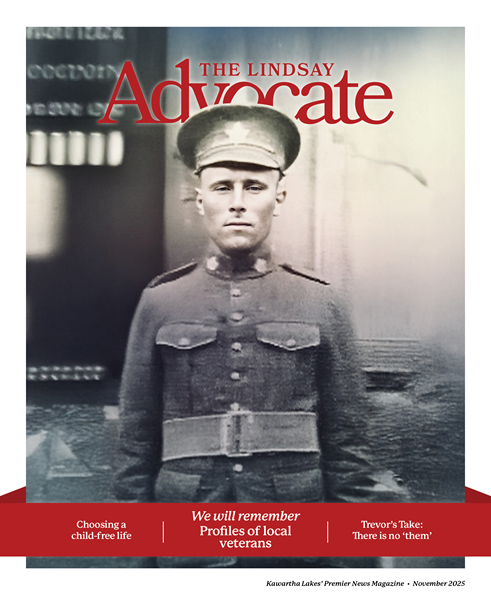Indigenous mural unveiled at Langton Public School

Langton Public School in Fenelon Falls recently unveiled a mural intended to recognize the Indigenous presence in the school and greater community.
Teacher Leah Ryrie explained that Langton “has been working towards truth and reconciliation and that lead to a relationship with Brittany Taylor (a First Nations Michi Saagiig Kwe singer, drummer, artist, storyteller, educator, entrepreneur from Treaty 20 territory). She started coming to the school almost on a monthly basis to share some of her traditional knowledge with students.”
That alliance grew to the point where Taylor is in the school three times a month and sees almost all of the classes. This year, she taught an aspect of Anishinabe culture known as the thirteen moons on turtle’s back.
According to Ryrie, “Anishinabe look at the calendar a little bit differently than we do in Western culture. So, instead of twelve months in the calendar, they have thirteen moons which mirrors what actually happens in nature.”
In the midst of all this, principal Nathan Stevenson asked Ryrie and fellow teacher Terra Macey about creating a mural to help represent those students in the building that are Indigenous. Ryrie said, “after we had these teachings with Taylor we thought, ‘well wouldn’t it be a cool thing to have the kids see their learning represented in the building.’ It’s just another way to connect the kids to the land that we’re on, for them to realize whose land we’re on, and for those Indigenous students and families in our building to feel welcomed when they come in.”
The artist’s time and materials were paid for with various grants, including one from the National Centre for Truth and Reconcilliation (NCTR). Langton students Aurora McConini and Maya Dunn completed the application for that grant and in addition to the financial award, the students won a trip to the NCTR where theypresented the project, participated in an honorary dinner, and toured the Canadian Museum for Human Rights.
Work on the mural began after the Trillium Lakeland School Board’s Indigenous student success team found Indigenous artist, Celeena Sandy to lead the project in mid-April.
Ryrie says, “she came and spent three days here with us. The students got to help paint, we had our trustee in here one day to help, the principal, the secretary, everybody had a hand in it. So, now we have a giant turtle represented, and student artwork that represents each of those thirteen moons frames that go all around the turtle. It’s really beautiful.”
Sandy found the project very rewarding, pointing out significant changes in attitudes among students from when she was in elementary school. “We are more connected than it might appear at first. It was good to see changes in racism from the time when I was in school, and the student’s curiosity about our teachings warmed my heart.”
For their part, Trillium Lakelands District School Board stated:
“In TLDSB, curriculum connections are made in all subject areas in both elementary and secondary schools highlighting Indigenous heritage, culture, and perspectives. At Langton, Indigenous learning is ongoing and the creation of the mural has been years in the making. Brittany Taylor is a valued Indigenous community partner with the school and has been instrumental in the teachings with the Langton students and staff, many of which can been seen in the mural. Through storytelling, sharing of experiences and teachings, music, Brittany fosters understanding of the many important relationships and teachings from these lands.”
Original Langton student art augments the mural. Images relating to each of the moons surround the turtle. June is the Strawberry Moon named after the first berries that come out in the growing season locally.
Terra Macey said creating a mural sounds easy, but there were several things to overcome along the way. Despite that, “every hiccup created bonds and often meant the involvement of more people” making it a more unifying project.
The educators hope the mural will ensure Indigenous students and their families “feel seen, and feel heard, and know that we’re a safe place for them, and we celebrate their culture.”



